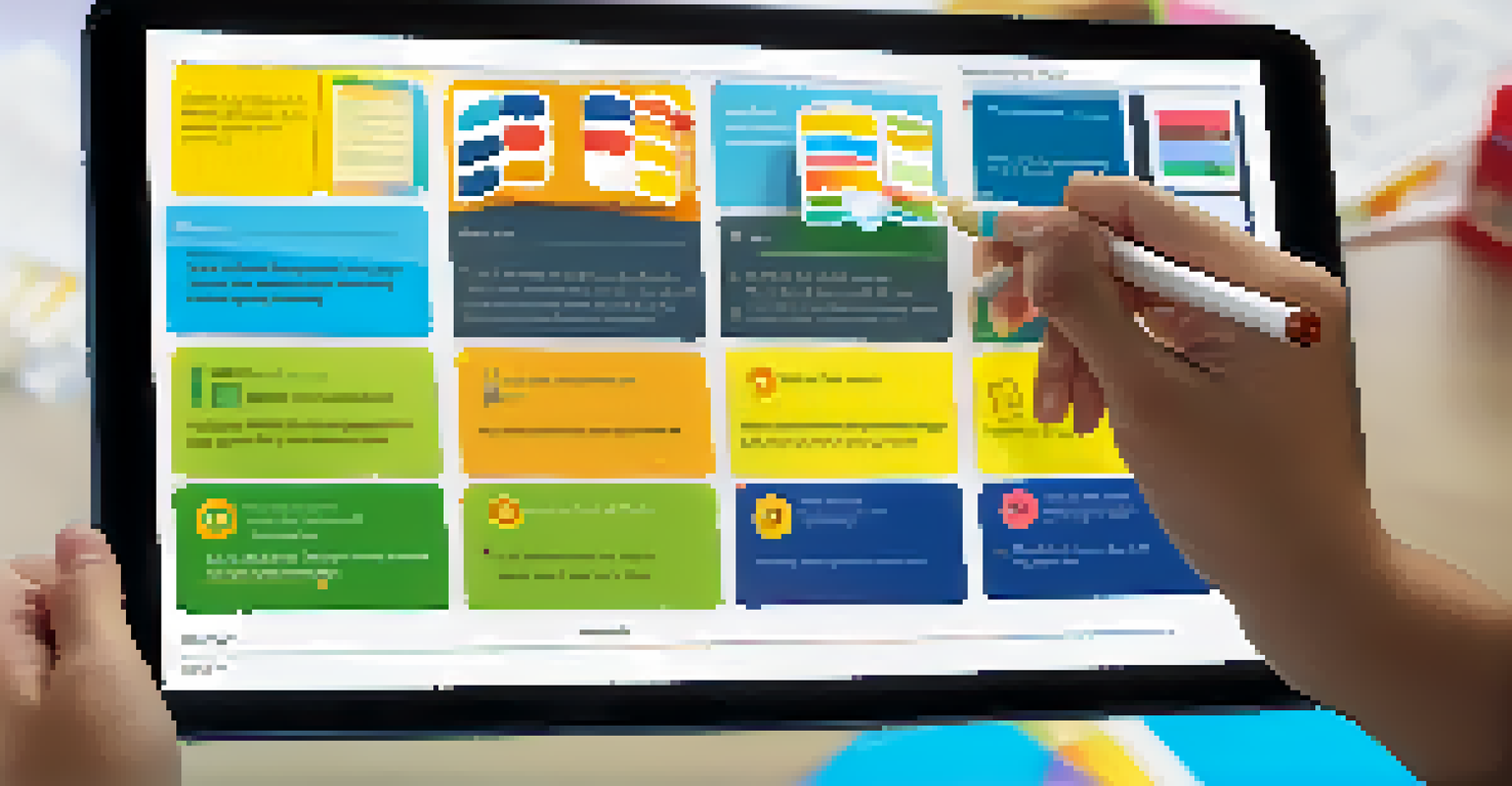Equity in Online Assessments: Ensuring Fair Evaluations

Understanding Equity in Online Assessments
Equity in online assessments means ensuring that all learners have a fair opportunity to demonstrate their knowledge and skills. This concept goes beyond mere access; it involves creating an environment where every student, regardless of their background, can perform to the best of their abilities. By recognizing the diverse needs of learners, educators can design assessments that are inclusive and supportive.
Equity is not just about providing equal opportunities; it's about recognizing that different individuals have different needs and providing the necessary support for each to succeed.
For instance, consider a student who might struggle with time management due to external responsibilities. An equitable assessment would allow for flexible time limits or alternative formats. This approach acknowledges that not all students have the same resources or support systems, making it essential to level the playing field.
Ultimately, understanding equity in assessments is about fostering an environment of respect and opportunity. When students feel valued and supported, they are more likely to engage meaningfully with the material and showcase their true potential.
Identifying Barriers to Fair Assessments
Barriers to fair online assessments can stem from various sources, including technological limitations, socioeconomic factors, and differing learning styles. For example, students without reliable internet access or suitable devices may find themselves at a significant disadvantage. This discrepancy can skew results and fail to reflect actual knowledge.

Moreover, the design of the assessment itself can pose challenges. If assessments rely heavily on reading comprehension, students with dyslexia or other learning challenges may struggle, not due to a lack of understanding, but because of the format. Identifying these barriers is crucial for creating assessments that truly measure what they are intended to.
Equity Ensures Fair Assessments
Equity in online assessments provides all learners with a fair opportunity to demonstrate their knowledge by accommodating diverse needs.
By actively working to recognize and address these barriers, educators can create a more equitable assessment landscape. This proactive approach ensures that all students have a fair chance to succeed, ultimately leading to more accurate representations of their abilities.
Implementing Universal Design for Learning (UDL)
Universal Design for Learning (UDL) is a framework that can significantly enhance equity in online assessments. UDL emphasizes providing multiple means of engagement, representation, and action to cater to diverse learning needs. By applying these principles, educators can create assessments that are accessible and beneficial for all students.
The goal of education is to create a more equitable society, where every student has the chance to thrive, regardless of their background.
For example, offering different ways for students to express their knowledge—such as written responses, videos, or presentations—allows individuals to choose the method that best suits their strengths. This flexibility not only accommodates various learning styles but also encourages creativity and deeper understanding.
Incorporating UDL into assessment design is not just about compliance; it's about embracing the diversity of learners. By doing so, educators foster an inclusive environment that empowers every student to succeed, regardless of their unique challenges.
Utilizing Technology for Equitable Assessments
Technology can play a pivotal role in ensuring equity in online assessments. With the right tools, educators can create adaptive assessments that respond to individual student needs. For instance, platforms that allow for timed adjustments or content modifications can help level the playing field.
Additionally, technology can facilitate alternative assessment formats, such as interactive quizzes or collaborative projects. These formats can engage students in different ways and provide a more holistic view of their understanding. When used thoughtfully, technology can bridge gaps and enhance learning experiences.
Identify Barriers for Success
Recognizing and addressing barriers to fair assessments is crucial for creating an equitable evaluation landscape.
However, it's crucial to ensure that all students have access to the necessary technology. Schools and institutions should work towards providing resources and support to minimize disparities, ensuring that every student can benefit from these advancements.
Creating Clear Assessment Criteria
Clear and transparent assessment criteria are essential for ensuring equity in evaluations. When students understand what is expected of them, they can better prepare and focus their efforts accordingly. This clarity helps reduce anxiety and empowers learners to take charge of their learning journey.
For instance, providing rubrics that outline specific performance indicators allows students to see how their work will be assessed. This transparency not only fosters trust but also encourages self-reflection and improvement. Moreover, it helps students from various backgrounds align their efforts with the assessment goals.
By establishing clear criteria, educators can create a fairer and more predictable assessment environment. This clarity ensures that all students, regardless of their starting point, have the information they need to succeed.
Fostering a Growth Mindset in Assessments
Encouraging a growth mindset in the context of assessments can significantly impact student performance and equity. A growth mindset emphasizes learning from mistakes and viewing challenges as opportunities for growth. This perspective can help students approach assessments with confidence rather than fear.
For example, providing opportunities for students to redo assessments or engage in reflective practices allows them to learn from their experiences. This not only promotes resilience but also reinforces the idea that effort and persistence are key to success. When students feel supported in this way, they are more likely to take risks and fully engage with the material.
Leverage Technology for Equity
Utilizing technology thoughtfully can enhance accessibility and provide alternative assessment formats to support all students.
By fostering a growth mindset, educators can create an assessment culture that values learning and improvement over mere performance. This shift can lead to a more equitable environment where all students feel capable of achieving their goals.
Collecting and Analyzing Assessment Data
Collecting and analyzing assessment data is critical to understanding and enhancing equity in evaluations. By examining performance trends and identifying patterns, educators can gain insights into how different groups of students are faring. This analysis can reveal whether certain demographics are consistently underperforming and highlight potential inequities in assessment design.
For example, if data shows that students from specific backgrounds are struggling with particular types of assessments, it may indicate a need for revised methods or support systems. By using data-driven approaches, educators can make informed decisions that directly address the needs of their students.

Ultimately, regular assessment data analysis allows for ongoing improvement and adaptation in teaching methods and assessment strategies. This commitment to data-informed practices ensures that equity remains a priority in online assessments.